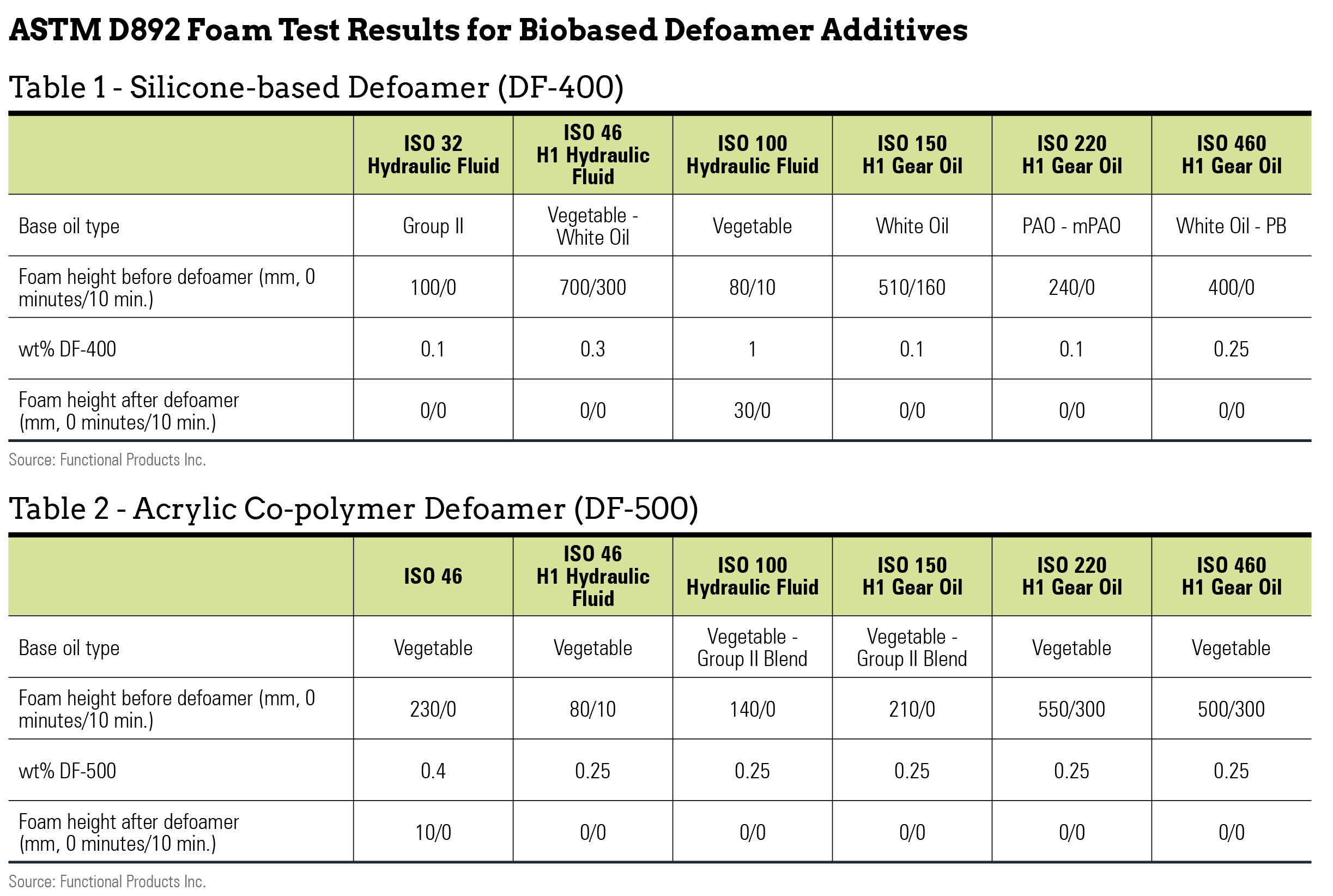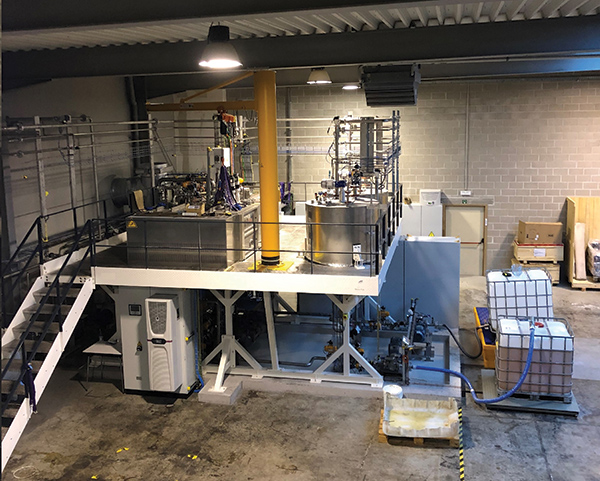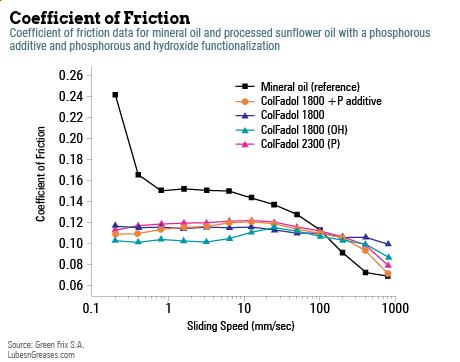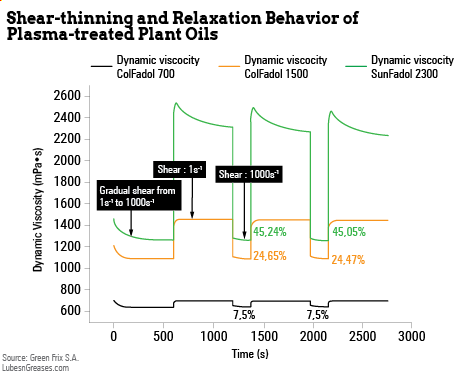
Additive technology goes green.
Green additives are escaping their hamster wheel of low volumes, high costs, incremental improvements and niche lubricant applications. The driving force is the sustainability movement, which focuses on the origin of raw materials, not just their performance. As the movement gains momentum, some early chemistries offer glimpses of what future additives may look like.
Consultant Jeffery L. Yost of BioRenewable Solutions in Cumming, Georgia, has observed heightened levels of interest in biobased products worldwide that may signal a dramatic shift toward the use of sustainable additive and base oil chemistries in lubricants, greases and metalworking fluids.
The European Union’s push for carbon neutrality is stimulating innovations in biobased renewable chemistries. Yost explained, “The EU is deeply committed and invested in reducing their carbon footprint via well-defined, step-like objectives to reach carbon neutrality by 2050. Every EU country has adopted the second Renewable Energy Directive, which promotes the use of energy from renewable sources.”
Within the next decade, the EU’s demand for sustainable biobased products will pressure supply, increase prices and drive innovation, Yost predicted. “For example, increasing demand for crude tall oil to make biofuels is already affecting supplies of tall oil fatty acid and distilled tall oil used in metalworking fluids.”
In February, the United States rejoined the Paris Climate Agreement, an international treaty that requires its member nations to curb their greenhouse gas emissions in order to limit the global temperature rise this century to 2 degrees Celsius above pre-industrial levels, he continued. Tax incentives and penalties could be imposed to help achieve goals for carbon neutrality.
He also pointed out that major automotive manufacturers, including GM, Jaguar Land Rover, Volvo and Ford, have announced production targets for electric vehicles and are committed to becoming carbon neutral by 2040. Such goals may well affect OEMs’ policies regarding use of traditional lubricants, processing fluids and metalworking fluids made from non-renewable materials.
“Biobased lubes are nothing new. There was no incentive for customers to pay more for a biobased alternative to a lower-cost, fossil-based product—until now,” Yost told Lubes’n’Greases. “The world has drastically changed within the past couple of years. I strongly believe that we are in the midst of a renaissance of innovation, and we will see the introduction of interesting sustainable, bio-renewable products within the next five to 10 years, or perhaps sooner. We need to prepare for this change by developing innovative lubricants, greases, metalworking fluids and their components.”
Indianapolis-based Biosynthetic Technologies recently launched Biocea additives in response to attractive growth forecasts for high-performance, environmentally acceptable metalworking fluid formulations. According to Debby Neubauer, the company’s marketing lead, the additives are prepared from castor oil using the company’s patented estolide technology. Estolides are a class of biobased oils that contain fatty acid groups and secondary ester linkages on an alkyl backbone.
She reported that these additives gave promising results in twist compression tests that modeled metal forming processes. During a twist compression test, the coefficient of friction is measured while the flat end of a hollow cylinder rotates against a stationary plate under applied pressure.
Neubauer noted that the estolide-based additives are biodegradable, non-bioaccumulative and non-toxic. They are odor-free and show no signs of causing dermal irritation or allergic sensitization. Currently, products are available for use in straight oil, soluble oil, semisynthetic and synthetic metalworking fluids.
Eco-friendly Defoamers
According to Erik Willett, vice president of technology and development with Functional Products Inc., the company is the first supplier to develop environmentally acceptable defoamers for inclusion on the European Union Ecolabel Lubrication Substance Classification list. To qualify for the list, substances must satisfy criteria for biodegradability, bioaccumulation, toxicity and sustainability. Lubricants that are formulated from components on the list can meet EU Ecolabel criteria and comply with U.S. Vessel General Permit requirements for environmentally acceptable lubricants.
Defoamers are critical additives that destabilize air bubbles and control foaming. Splash applications and high-speed pumps and gears can entrain air in lubricants, leading to foam that can interfere with lubrication, contribute to cavitation, cause sumps to overflow, and lead to mechanical failure.
Willett explained, “Selection of a defoamer often presents a formulating challenge because defoamer performance depends on the specific base oil. Polybutylacrylate defoamers traditionally work well in relatively non-polar mineral oils because they have just the right solubility to help them interfere with the air-oil interfaces in the foam.
“But [environmentally acceptable lubricant] base fluids are generally more polar than mineral oils, and polybutylacrylate is too soluble to be an effective defoamer. We synthesize copolymer defoamers from multiple acrylate monomers and tune their polarity for optimum performance in EALs like vegetable oils and synthetic esters.”
Functional Products identified a particular need for safe, hazard-free defoamers. “Many defoamers are based in kerosene, methyl benzenes or very light petroleum oils with high flammability and risks for inhalation and aquatic contamination. Some benzene derivatives are labeled as carcinogens. It’s a shame when a formulator goes through all the work of creating an EAL and then has no choice but to add a defoamer with these properties.”
Both of the company’s biobased defoamers are non-flammable as well as biodegradable, and have no aquatic toxicity. They are designed for use in gear oils and hydraulic fluids and are commercially available.
According to Willett, DF-500 is a silicone-free acrylic copolymer that improves air release in soybean oil, canola oil and other fatty acid-based esters, polyol esters such as trimethylpropane trioleate, and simple esters like oleates and stearates. It is not recommended for use in diesters and short-chain polyols because they are too polar, or in biodegradable polyalphaolefins, which are too nonpolar, he noted. Nevertheless, it is effective in blends of vegetable oils with high-polarity esters or PAOs where the polarity is complementary to the additive.

The other defoamer, DF-400, is silicone based and works across a wide variety of plant-based and synthetic esters, mineral oils, PAOs and other base oils. The formula contains a proprietary “green” solvent system instead of conventional aromatic oils or isoparaffins that can pose safety hazards, Willett said.
He explained that both defoamers were tested in a range of formulations according to the ASTM D892 foam test. In this test, dilute solutions of defoamer in base oil are poured into two 1-liter glass cylinders maintained at 24˚C and 93˚C. Air is blown through a glass tube attached to a porous stone immersed in the fluid for 5 minutes. The foam height is measured in millimeters immediately after the air flow is discontinued and again after a resting period of 10 minutes. Tables 1 and 2 show the foam heights before and after each defoamer was added to various hydraulic fluids and gear oils.
In ASTM D892 testing, both additives significantly reduced foaming in multiple formulations, Willett concluded.
Lightning Strikes
Plant-based oils such as canola, linseed, soy, sunflower and palm are common sustainable base oil feedstocks. In plants, three fatty acids and one glycerol react to make an oil molecule that contains carboxyl groups with carbon-oxygen bonds, which are polar and can adhere to metal. The oils can also contain unsaturated carbon double bonds as well as non-polar hydrocarbon portions. Molecules with both polar and non-polar components tend to adsorb on solid surfaces and disperse solid particles.
For lubricants, plant-based oil chemistries have advantages such as biodegradability, lubricity, high flash point and good solvency, which is the ability to dissolve additives and disperse contaminants. Downsides are relatively low viscosities and limited hydrolytic, oxidative and thermal stability.

Frederic Danneaux, technology and business developer with Belgium-based Green Frix S.A., explained that the company engineered technology similar to another natural phenomenon—lightning—to modify the chemistry of plant-based oils for use as lubricant additives. Lightning is electrostatic discharge that occurs when molecules in the atmosphere form a plasma—an extremely hot gas of positively charged ions and negatively charged free electrons that carries electric current, for example between a cloud and a tree or building. Voltolization or electro-ionization refers to the deliberate use of electric discharges to modify organic molecules.
During the twentieth century, voltolization was used to process fish oils to reduce their odor and rapeseed-mineral oil blends to lower their pour point for lubricating aircraft engines. Companies including MicRos Lubrication Technologies in Brussels, Belgium, and Suzhou, China, as well as Voltrion BV in Ghent and Elektrion in Courcelles, Belgium, currently use electric discharge methods for lubricant applications.
Danneaux explained that Green Frix explored voltolization technologies, redesigning the technique to include well-controlled plasma and optimized equipment, from the geometry of the reactor and electrode assembly to the choice of gas, power supply and pumps. The company developed procedures to control its process more tightly, and the patented technology has now been scaled up.

According to its patents, Green Frix uses a layered “sandwich” of metal electrodes and dielectric (non-conductive) layers to generate a plasma in a gas-filled reactor. Oil is sprayed onto the layers, or the electrode assembly is immersed. Then processed oil is filtered, its viscosity continuously monitored, and is processed again or run out and packaged.
Green Frix can process plant-based oils to make a wide range of products with viscosities from 68 to 6,000 centistokes at 40˚C. The company says it can also design products with specific rheology. Some products are on the LuSC list or registered as NSF HX-1, which means they can be used to formulate H1-registered lubricants for incidental food contact.
Danneaux explained that the plasma can have different effects, depending upon the choice of oil, plasma gas and processing parameters. Plasma can hydrogenate, or add hydrogen, and convert carbon double bonds to more stable single bonds. This can improve the thermal and oxidation stability of oil. Likewise, plasma can add a functional group that changes the ability of oil molecules to adsorb onto metal and reduce friction and wear.

Control of rheology, or the flow and elastic behavior of a substance, depends on using plasma to add or remove electrons from organic molecules to form unstable free radicals that quickly react to form larger molecules with branched or network-like structure. Danneaux commented that oil can be processed to adjust its shear-thinning characteristics so that it is more viscous at lower shear rates and less viscous at higher shear rates. This helps prevent undesirable slip-stick behavior.
Advances in technology such as plasma treatment can now provide many possible options to produce a broad range of renewable, sustainable biobased additives for future use in lubricants.
Mary Moon, Ph.D., is a professional scientist, consultant and technical writer and is technical editor of The NLGI Spokesman. Contact her at mmmoon@ix.netcom.com or 267-567-7234.